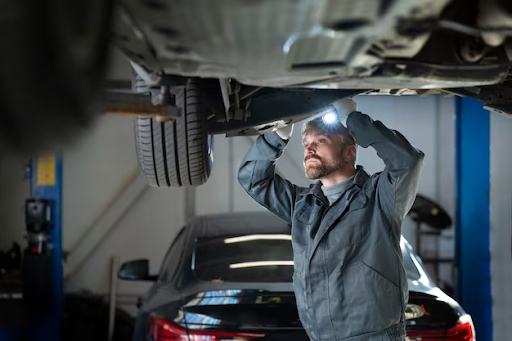Your vehicle’s brake system is one of the most critical components for ensuring your safety on the road. When brake problems arise, it’s important to diagnose and address them promptly to avoid potentially dangerous situations. In this article, we’ll explore some of the most common brake problems and provide tips for troubleshooting them. We’ll also discuss the importance of using high-quality aftermarket parts and seeking professional auto brake repair services when necessary.
Spongy or Soft Brake Pedal
If your brake pedal feels spongy or soft when you press it, it could indicate a problem with the brake fluid or a leak in the system. Check the brake fluid level and top it up if necessary. If the problem persists, it’s possible that there is air in the brake lines or a leak in the system. In this case, it’s best to have the brakes inspected by a qualified mechanic.
Aftermarket Parts
Aftermarket parts refer to replacement parts that are manufactured by companies other than the original equipment manufacturer (OEM). While aftermarket parts can be a cost-effective alternative to OEM parts, it’s important to choose high-quality parts from reputable manufacturers. Cheap or inferior aftermarket parts may not meet the same standards for quality and performance as OEM parts, and may lead to premature wear or failure. When replacing brake parts, it’s always best to use high-quality aftermarket or OEM parts to ensure optimal performance and safety.
Pulling or Grabbing Brakes
If your vehicle pulls to one side when you apply the brakes, it could indicate that the brake pads or rotors are worn unevenly or that the calipers are sticking. Check the brake pads and rotors for uneven wear or damage, and have them replaced if necessary. If the problem persists, it’s possible that the calipers are sticking or that there is a problem with the wheel alignment. In this case, it’s best to have the brakes and alignment inspected by a qualified mechanic.
Auto Brake Repair
The auto brake repair refers to the process of inspecting, diagnosing, and repairing issues with a vehicle’s brake system. This can include replacing worn brake pads and rotors, repairing or replacing brake calipers, and bleeding the brake fluid. It’s important to have your brakes repaired by a qualified mechanic who uses high-quality parts and follows proper repair procedures. Attempting to repair the brakes yourself without the proper knowledge and equipment can be dangerous and may lead to further damage to the vehicle.
Grinding or Squealing Noises
If you hear grinding or squealing noises when you apply the brakes, it could indicate that the brake pads are worn down to the metal backing plate. This can cause damage to the rotors and other brake components, so it’s important to have the brakes inspected and repaired as soon as possible. In some cases, the noise may be caused by a foreign object lodged in the brake system, which can also cause damage if not removed.
Conclusion
Maintaining your vehicle’s brake system is essential for ensuring your safety on the road. By being aware of common brake problems and taking steps to troubleshoot them, you can help to prevent accidents and costly repairs down the line. Signs of brake problems include a spongy or soft brake pedal, pulling or grabbing brakes, grinding or squealing noises, and a vibrating or pulsing brake pedal.
